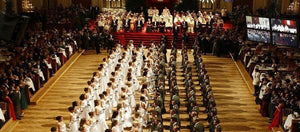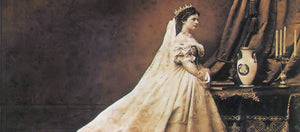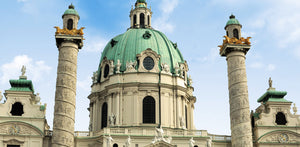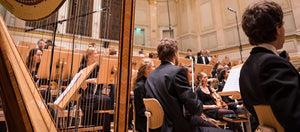Vienna Cake Guide: Discover Austria’s Sweetest Traditions
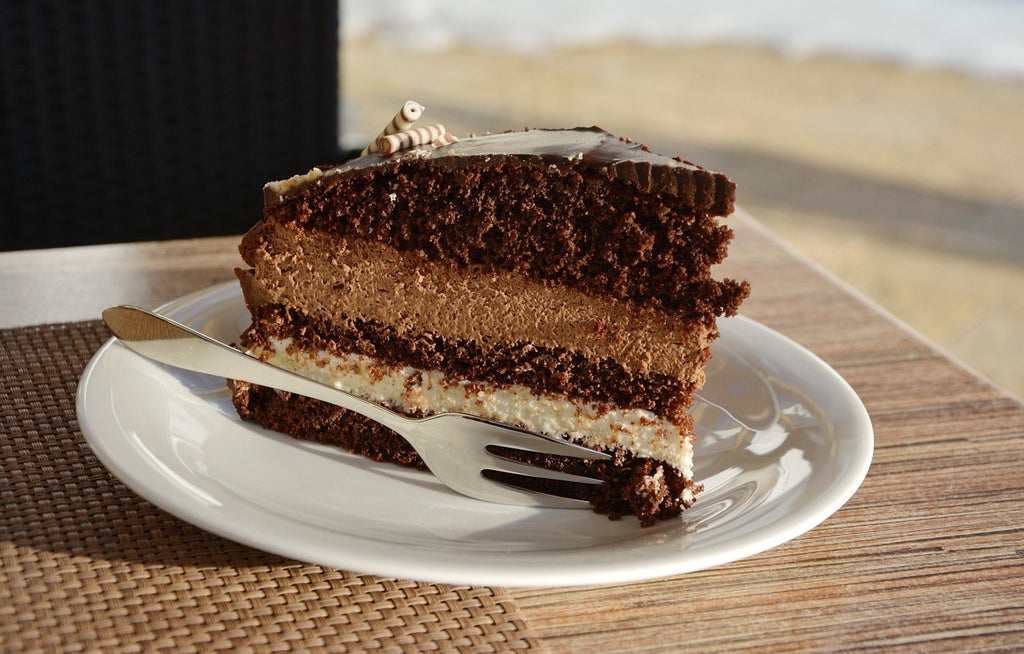
Explore the most famous Vienna cakes and traditional Austrian desserts. Visit Gloriette Café and discover why tasting these treats is only part of the full Viennese experience.
Introduction: The Sweet Taste of Vienna
Vienna isn’t just the city of music and imperial history—it’s also a paradise for dessert lovers. With a legacy rooted in both royalty and rustic traditions, Viennese cakes are more than just sweets—they’re part of the city’s cultural identity.
If you’ve ever searched for the perfect Vienna cake, you’ve likely come across names like Sachertorte or Esterházy-Torte. But these classics are just the beginning of a deeper, richer cake culture that you can only truly appreciate by sitting in a traditional café, such as the Gloriette Café overlooking Schönbrunn Palace.
Let’s dive into the most famous Vienna cakes and understand why dessert in Vienna is more than just a treat—it's an experience.

A Slice of History: The Viennese Love Affair with Cake
Vienna's café culture dates back to the late 1600s, when the first coffeehouses began to flourish after the Ottoman siege. These early coffeehouses quickly became more than just places to drink coffee—they evolved into intellectual and artistic salons, where thinkers, artists, and composers gathered to debate, compose, and write.
As coffee became a daily ritual, cakes and pastries naturally followed. Many of the recipes we now associate with Vienna cakes were born in the imperial kitchens or were refined by master confectioners over generations. The Austro-Hungarian Empire's vast cultural reach meant that influences from Hungary, Bohemia, and even France merged into Viennese baking traditions.
Today, the tradition of enjoying a slice of cake in the afternoon is as sacred as ever. It’s not just about dessert—it’s about pause, pleasure, and participation in something historic. A visit to a Viennese café is a culinary time machine that links modern life with the imperial past through flavor and atmosphere.
1. Sachertorte – The Most Famous Vienna Cake
It would be impossible to write about Viennese cakes without starting with the legendary Sachertorte.
Created in 1832 by a 16-year-old apprentice named Franz Sacher for Prince Metternich, this dense chocolate cake layered with apricot jam and coated in a shiny, flawless chocolate glaze is perhaps the most famous Vienna cake in the world. It’s traditionally served with a dollop of unsweetened whipped cream—a perfect contrast to the richness of the cake—and a side of elegance.
What makes the Sachertorte so revered is its quiet confidence. It doesn’t rely on excessive sweetness or complicated decoration. Instead, it’s about precision and balance: the subtle tartness of the apricot jam cutting through the smooth richness of the chocolate, the dark cocoa tones of the sponge, and the crisp texture of the glaze that seals the cake like polished lacquer.
The original Hotel Sacher version remains a pilgrimage site for cake lovers, and rightly so. It’s served in a refined setting with impeccable presentation, preserving the sense of occasion the cake was meant to create. But part of the charm of the Sachertorte is its ubiquity—almost every reputable café in Vienna has its own variation, some using darker chocolate, others infusing the sponge with syrups or using more jam. Locals often have a personal favorite and enjoy debating which version truly captures the spirit of the original.
Whether you eat it in the grand setting of the Sacher Hotel, in a quiet neighborhood café, or on a terrace overlooking the city, Sachertorte is not just a dessert—it’s a story, a tradition, and a moment of Vienna you can taste.

2. Esterházy-Torte – Fit for Royalty
Named after the Hungarian noble Esterházy family, this cake is a masterpiece of layered almond meringue and buttercream infused with cognac or vanilla. Its decorative white fondant top, often with a spiderweb design, makes it as eye-catching as it is delicious.
Less sweet than some of its counterparts, the Esterházy-Torte is a refined choice for those who appreciate delicate flavors and layered textures.

3. Malakofftorte – A Taste of French Influence
Though French in origin, Malakofftorte became popular in Austria in the 19th century. Made from ladyfingers soaked in coffee or rum and layered with buttery vanilla cream, this no-bake dessert is light, creamy, and slightly boozy—a charming combination.
It's a popular choice for birthdays and special occasions, yet many Viennese cafés still serve it as part of their daily offerings.
4. Topfentorte – Austria’s Cheesecake
Austrian cakes aren’t all about chocolate and sugar-laced cream. The Topfentorte, made from “Topfen” (a type of fresh cheese similar to quark), is a lighter, tangier alternative. Often layered with fruit or set on a soft sponge base, it’s refreshing and less indulgent—though just as satisfying.

5. Apfelstrudel – Not Technically a Cake, But Still a Must-Have
While it doesn’t fall under the traditional definition of a cake, Apfelstrudel (in English “apple strudel”) is one of Vienna’s most iconic desserts—and it absolutely deserves a place on any pastry lover’s list. This delicate pastry is filled with tart apples, raisins, cinnamon, and sugar, all wrapped in impossibly thin layers of flaky dough.
Served warm with a dusting of powdered sugar and often accompanied by vanilla sauce or whipped cream, Apfelstrudel captures the essence of Austrian home-style baking. It’s a comforting, rustic dessert that tells a story of tradition and simplicity—and skipping it would be a mistake.

6. Kardinalschnitte – A Sweet Nod to the Church
This visually stunning dessert alternates fluffy meringue and yellow sponge in symmetrical stripes, filled with either whipped cream or mocha cream. Named after Vienna’s cardinals due to its white and yellow colors, the Kardinalschnitte manages to be both elegant and airy.
Its light texture makes it ideal for those who want a sweet treat that won’t feel too heavy. The gentle sweetness, paired with coffee or cream flavors, complements a robust Viennese coffee perfectly. Though not always available, it's a favorite in more traditional cafés and a beautiful representation of Viennese attention to detail.
7. Punschkrapfen – A Pink Delight
Punschkrapfen are small, rum-soaked cake cubes wrapped in bright pink fondant. Inside, they hold a rich mix of sponge cake crumbs, jam, chocolate, and sometimes nuts or raisins. Their bold color and compact size make them an eye-catching choice in any bakery window.
While fun and festive in appearance, they’re also intensely flavorful and surprisingly rich. A traditional favorite during carnival season, they’re also enjoyed year-round. Think of them as a Viennese version of a cake bonbon—one that packs a punch in both taste and spirit.

8. Dobostorte – A Hungarian-Austrian Classic
Originally created by Hungarian pastry chef József Dobos, the Dobostorte is a cake of impressive structure and deep flavor. It consists of multiple layers of sponge cake filled with chocolate buttercream and topped with a layer of crisp caramel glaze.
The contrast between the soft cake and the crunchy caramel makes for an exciting texture, while the rich chocolate filling adds warmth and decadence. Often served in thin, elegant slices, this cake is a luxurious option that continues to be popular in Vienna’s classic cake repertoire.
9. Gugelhupf – The Bundt Cake of Vienna
This ring-shaped sponge cake is a staple of Austrian baking. The Gugelhupf is typically marbled with chocolate and vanilla, or enriched with raisins, lemon zest, and sometimes a splash of rum. It’s often served dusted with powdered sugar and accompanied by coffee.
What makes the Gugelhupf special is its simplicity and universality—every Viennese grandmother has a recipe. It’s more of a homestyle cake than a patisserie showpiece, but that’s part of its charm. You’ll find it at many cafés, often as a comforting morning treat or an understated dessert option.

Where to Try These Cakes in Vienna
Gloriette Café
Perched atop Schönbrunn Palace, Café Gloriette is the ideal place to enjoy a classic Viennese cake with a stunning view. Whether you're savoring a slice of Sachertorte or digging into warm Apfelstrudel, the historic setting and baroque elegance add unforgettable charm to your experience.

Café Landtmann
Freud’s favorite café and still a favorite among locals, Café Landtmann offers a wide range of traditional cakes, including Gugelhupf and Topfentorte. The refined setting and historic ambiance make it a perfect place to enjoy a slow, indulgent afternoon.
Café Central
A legendary spot known for its opulent interiors and literary history, Café Central serves many of Vienna’s best-loved desserts, including Kardinalschnitte, Malakofftorte, and Punschkrapfen. The high ceilings and live piano music only enhance the sense of grandeur.
More Than Just Dessert: The Full Viennese Experience
As indulgent as it is to explore Vienna through its desserts, the city offers more than sweet pleasures. To complete the experience, pair your cake tastings with another Viennese tradition: live classical music concerts. From performances at the Wiener Musikverein to advent concerts at St. Stephen’s Cathedral, Vienna’s soundscape is as rich as its dessert menus.
Whether you’re sipping coffee in a chandelier-lit salon, enjoying Sachertorte with a palace view, or listening to a Strauss waltz after dinner, you’re participating in a living cultural heritage.
Final Thoughts
When you indulge in a slice of Vienna cake, you’re not just enjoying dessert—you’re taking part in a centuries-old tradition that still defines daily life in Austria’s capital.
So next time you visit, don’t just tour the palaces and stroll the cobblestone streets. Find a café, order a cake, and maybe book a concert. Because in Vienna, flavor and music belong together—and both are best enjoyed slowly.
Book your accomodation in Vienna
Booking.com- Tags: Guide


